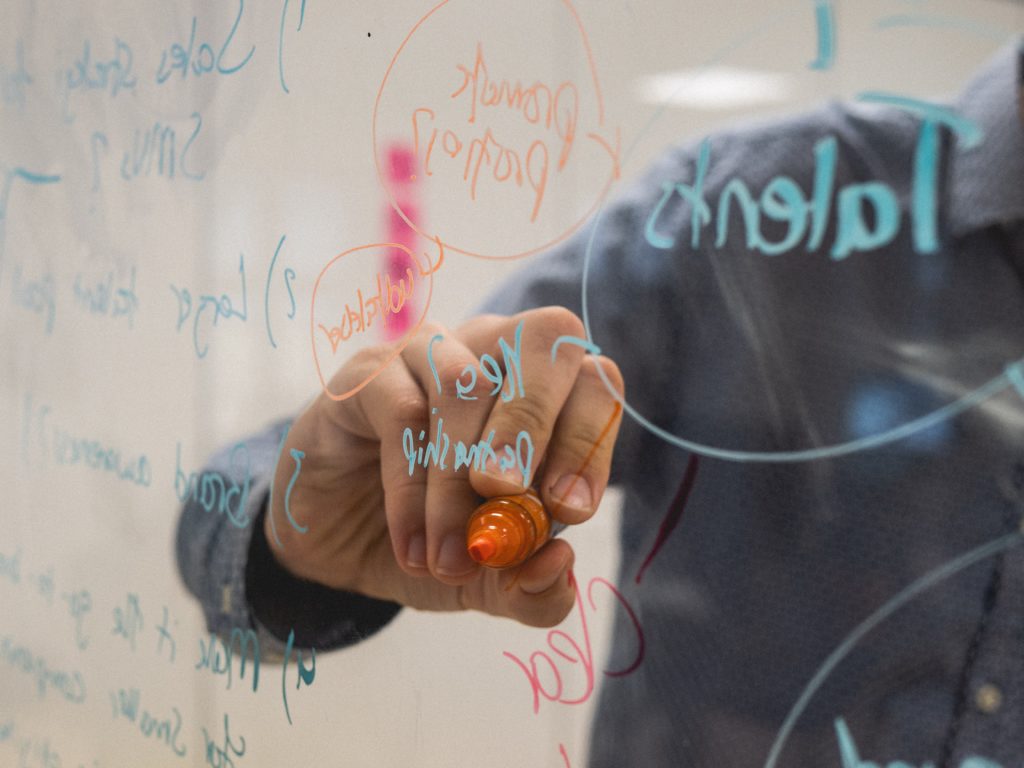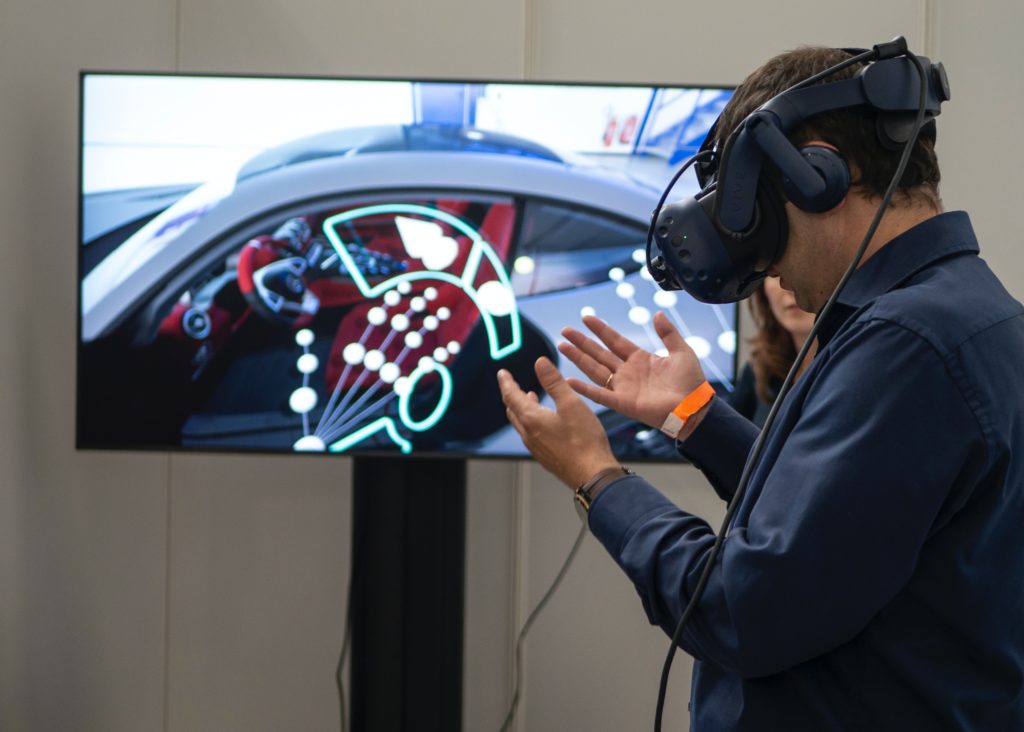Real Innovation Now Lies in the Most Unexpected Place
After the unprecedented disruption caused by the pandemic, our cultures, communities and companies are looking to get back on course and build for the future.
For so long, innovation has been touted as one potential route to growth, especially after a period of disruption, but pre-pandemic this has been more often than not siloed off to separate locations or hubs. Is this now the right time to rethink that model on how we innovate and engage a broader knowledge network?
Are we about to see a period in time, akin to past decades, where we see a notable rise in new ideas and concepts, patents and IP, as we emerge from this seismic cultural pause?

I certainly believe that innovation – in a post-pandemic sense – will be about an opportunity to unlock ideas and insights at a greater pace than before, by tapping into the knowledge held by every individual, by building back the right environment that enables that individual within an innovative organisation, to use their collective accumulated knowledge, of themselves and others around them, to collaborate and develop more provoking services and products.
In the past year this enforced pause has given us time to renew and rethink our working models. We’ve seen how some have developed products focused on a project-based learning model, spending time to understand their sector, their competitors and developing products with their internal teams.
What we’ve seen is that the pandemic has acted as a pressure cooker; pushing individuals, teams and organisations to rethink our lives as we knew them and step forward to adopt and adapt new ways of thinking about innovation and how design tools, processes and and creative thinking can engage and immerse our organisations.
For the majority of businesses, the focus during the last year has been on balancing the books, whilst trying to maintain productivity from multiple locations. This has stretched staff morale and caused anxiety across the business landscape. For a lot of businesses, this anxiety has resulted into a shift in priorities.

According to a recent survey by McKinsey, only a quarter of executives reported that capturing new growth was a top priority today, compared to roughly 60 percent before the crisis hit.
While new ideas and innovation-led growth has been far down the pecking order of priorities, we are finding that listening, opening up, co-creating and re-thinking ideas and insights is one way of re-engaging with employees to open up new conversations and spark new ideas.
At CCD, we’ve been fortunate to work with South Western Railway, SWR and Network Rail, NR on their Wessex infrastructure improvement project in recent months. They have taken the chance to use this time to rethink innovative ways to reimagine their organisation, their approach to co-creation with employees and most importantly how they deliver services and products that are passenger-focused.
Organisations like SWR and NR have set a benchmark of wanting to achieve something game-changing by working innovatively across teams; looking at how the business needs to be run from both a micro and macro level. This view doesn’t just incorporate systems but also people, behaviours and the organisational culture and structure.
The enforced ‘pause’ of the past year has unpacked a lot of complexities, both emotional and physical, trying to re-interpret the way we see, think and feel about our communities and the people around us. I’d shared a few months back a quote on a Design Exec meeting from Dov Seidman, that as we move out of the third lockdown in the UK, it seems to have even more relevance to our immediate climate.
When you press the pause button on a machine it stops. But when you press the pause button on human beings they start - start to reflect, rethink assumptions, and reimagine a better path.
But how do businesses rethink their product and service offers while encouraging their employees to help them to reimagine a better pathway forward?
Organisations must realise there’s an opportunity to rethink services from within, and use creative thinking to open up a more collaborative and empathetic culture that nurtures innovation. Perhaps the real innovative opportunity is that the creative health of every employee within your organisation is a real opportunity to unpack the lessons learnt from across the last year and learn from the wider knowledge held within the organisation.
Teams need to be even more aligned than before and with more innovative briefs and permissions from senior stakeholders, these opportunities now start firmly from within. We must rethink the way we communicate, how we share information and insights with each other to spark new ideas that fundamentally lead to innovative conversations.
So, whether that’s a home or hybrid working model after lockdown, flexible hours more in tune with personal responsibilities and a stronger work/life balance.
Or whether that’s a renewed look at working practices or workspaces, or other aspects of how a business is run, of more than 200 organisations surveyed by McKinsey across industries, more than 90 percent of executives said they expect the fallout from pandemic to fundamentally change the way they do business over the next five years, with almost as many asserting that the crisis will have a lasting impact on their customers’ needs.
Teams need to be even more aligned than before and with innovation-led briefs and senior stakeholder buy-in, the opportunity now lies from within. We must rethink the way we communicate, we brief each other and ultimately share insights and spark new ideas that lead to innovative conversations.
So, whether that’s home or hybrid working model after lockdown or flexible hours more in tune with personal responsibilities and stronger work/life balance. Whether that’s a renewed look at working practices or other aspects of how a business is run, of the more than 200 organisations surveyed by McKinsey across industries, more than 90 percent of executives said they expect the fallout from COVID-19 to fundamentally change the way they do business over the next five years, with almost as many asserting that the crisis will have a lasting impact on their customers’ needs. Innovation could help reduce that void.

Perhaps an internal innovation drive could be timely to help reduce that void.
I think that innovation is made up of both micro and macro moments, it can accelerate a new proposition that is a north star, or shine a new light on something that has been gathering dust. Whilst the pandemic has been the catalyst, technology has been the facilitator for change.
In fact, using technology in a climate where you need a gearshift to bring the whole business along with you alongside an innovation space, can help to unpack the ideas rapidly.
A good example is the acceleration we’ve seen across e-commerce in recent months, having used both innovation and technology as a route forward with the sector accelerating forward by 5 years in the last past 12 months alone. Within rail, we also seen how new travel patterns away from normal commute times have began to restructure new products and the wider range of services available around these transport hubs. New ideas and ways of rethinking the service model are abundant.
But technology needs to be humanised and functional and this is where a broad set of perspectives and experiences, can help to quickly get to early MVP’s that show potential. So when we work with our clients, some of the early conversations naturally start around how does their business take advantage of their internal knowledge, and where are the opportunities to unlock further the insights with an innovation mindset.
Through our recent experiences in the rail sector, I believe that some of the key elements to deliver that innovation are: alignment at senior stakeholder level, agreeing a ‘north star’ then having the collective permission to go explore and challenge as much the ways of working, as the territory you find yourself in.
We are finding more organisations are willing to have conversations to open up new collaborations with smart partners to test and trial new technologies. We have spent time seeking out parallels for them to review across other sectors, but the magic is using innovation projects as a catalyst to enable better collaboration and co-creation within internal teams.
We’ve found that problem solving around complex tasks – organisations have plenty of these for sure, and the day-to-day running of the ‘business’ stops most organisations from nurturing and acknowledging it’s internal value as part of its DNA.
One path to your future innovation is certainly the people around you who have paused, but with the right permission they can help your organisation reset and re-imagine that new pathway forward, embracing new experiences through sharing ideas, unpacking their collective knowledge and driving an innovative spirit to go find that next product or service innovation.
As Nasa’s Perseverance chute displayed to the cosmos as it landed on Mars: “dare mighty things”.